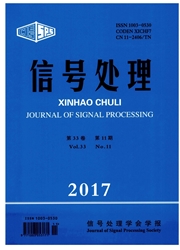

 中文摘要:
中文摘要:
自1998年互联网工程任务组(IETF)提出下一代互联网标准规范以来,IPv6已经历了十多年的发展.现今已有越来越多的IPv6产品被投入到了开发与应用中.而如何提高不同产品间的互通性和可靠性则成为了一个关键问题.进行协议一致性测试是提高IPv6实现可靠性的一种有效方式.本文就重点针对IPv6邻居发现协议进行了一致性测试分析.本文首先简要分析了IPv6邻居发现协议的主要功能及实现原理,并据此抽象出其有限状态机(FSM)模型.进而结合一种现有基于有限状态机(FSM)的一致性测试序列改进算法生成了该协议的抽象测试序列.本文在最后对得到的测试序列进行了有效性和可靠性分析,分析表明,使用该算法得到的测试序列不仅在序列长度上较传统UIO序列法有了明显的缩短,同时对测试过程中可能发生的输出错误及末状态转换错误也具备良好的检测能力.本文获得的抽象测试序列可对相关IPv6协议开发者提供有效参考.
 英文摘要:
英文摘要:
Since the Internet Engineering Task Force (IETF) put forward the next generation of Internet standards in 1998, IPv6 (Internet Protocol version 6) has gone through ten years of evolution and nowadays more and more IPv6 devices have been put into development and application. So how to improve the reliability and interoperation between different IPv6 implementations has become a key point. Conformance testing is an effective method to improve the reliability of IPv6 im- plementation and this paper will focus on the conformance testing of IPv6 Neighbor Discovery Protocol (NDP). In this paper we first analyze the major function and principle of NDP and present the finite-state machine (FSM) model. Based on an existing improved algorithm for conformance testing we derive the abstract conformance testing sequence for NDP. We also also analyses the validity and reliability of this algorithm. The analysis results show that the length of the testing sequence obtained by using this algorithm is shorter than traditional U-method and the detection coverage for output error and tail state error is favourable. The abstract conformance testing sequence we derived in this paper can provide meaningful reference to Ipv6 protocal develpoers.
 同期刊论文项目
同期刊论文项目
 同项目期刊论文
同项目期刊论文
 A NovelEnergy-Efficient Reception Method Based on Random Network Coding in CooperativeWireless Senso
A NovelEnergy-Efficient Reception Method Based on Random Network Coding in CooperativeWireless Senso AnEnergy-Efficient Transmission Protocol for RNC-based Cooperative WSNs withPartial Energy Harvestin
AnEnergy-Efficient Transmission Protocol for RNC-based Cooperative WSNs withPartial Energy Harvestin Performance Comparison Analyses of the Nth Best Relay Selection Schemes Over Independent and Non-ide
Performance Comparison Analyses of the Nth Best Relay Selection Schemes Over Independent and Non-ide Jointing Adaptive Modulation Relay Selection Protocols for Two-Way OpportunisticRelaying Systems wit
Jointing Adaptive Modulation Relay Selection Protocols for Two-Way OpportunisticRelaying Systems wit Joint Relay Ordering and Linear Finite Field Network Coding for Multiple-Source Multiple-Relay Wirel
Joint Relay Ordering and Linear Finite Field Network Coding for Multiple-Source Multiple-Relay Wirel Outage Probability and Ergodic Capacity Analysis for Two-Way Relaying System with Different Relay Se
Outage Probability and Ergodic Capacity Analysis for Two-Way Relaying System with Different Relay Se Joint Relay Selection and Power Allocation for Two-way Relay Channels with Asymmetric Traffic Requir
Joint Relay Selection and Power Allocation for Two-way Relay Channels with Asymmetric Traffic Requir Opportunistic Multiple Relay Selection for Two-Way Relay Networks with Outdated Channel State Inform
Opportunistic Multiple Relay Selection for Two-Way Relay Networks with Outdated Channel State Inform Two-way denoise-and-forward network coding opportunistic relaying aiming at minimizing euclidean dis
Two-way denoise-and-forward network coding opportunistic relaying aiming at minimizing euclidean dis Tight performance bounds for two-way opportunistic amplify-and-forward wireless relaying networks wi
Tight performance bounds for two-way opportunistic amplify-and-forward wireless relaying networks wi Interaction of multiplexing gains and power exponents allocation of two-level superposition coding r
Interaction of multiplexing gains and power exponents allocation of two-level superposition coding r Asymptotic Performance Analysis for Two-Way Opportunistic Relaying Based on Amplify-and-Forward Netw
Asymptotic Performance Analysis for Two-Way Opportunistic Relaying Based on Amplify-and-Forward Netw Comparison of average symbol error rate and optimal power allocation for two-way opportunistic relay
Comparison of average symbol error rate and optimal power allocation for two-way opportunistic relay PERFORMANCE ANALYSIS OF USER FAIR-BASED RELAY ADAPTIVE POWER ALLOCATION IN PHYSICAL-LAYER NETWORK CO
PERFORMANCE ANALYSIS OF USER FAIR-BASED RELAY ADAPTIVE POWER ALLOCATION IN PHYSICAL-LAYER NETWORK CO The N-Rth dual best relays opportunistic cooperation schemes and performance analyses over Nakagami-
The N-Rth dual best relays opportunistic cooperation schemes and performance analyses over Nakagami- Performance analyses of N-Rth dual best relays opprotunistic cooperation with amplify-and-forward pr
Performance analyses of N-Rth dual best relays opprotunistic cooperation with amplify-and-forward pr Cognitive Opportunistic Relaying Systems with Mobile Nodes: Average Outage Rates and Outage Duration
Cognitive Opportunistic Relaying Systems with Mobile Nodes: Average Outage Rates and Outage Duration Jointing Adaptive Modulation Relay Selection Protocols for Two-Way Opportunistic Relaying Systems wi
Jointing Adaptive Modulation Relay Selection Protocols for Two-Way Opportunistic Relaying Systems wi Average Level Crossing Rate and Fading Duration of Multiuser Single Relay Cooperation Wireless Uplin
Average Level Crossing Rate and Fading Duration of Multiuser Single Relay Cooperation Wireless Uplin Research on the Outage Exponent of Superposition Coding Relaying with Only Relay-to-Source Channel S
Research on the Outage Exponent of Superposition Coding Relaying with Only Relay-to-Source Channel S Fairness-oriented physical layer network coding in cooperative multiple access channels due to MRC a
Fairness-oriented physical layer network coding in cooperative multiple access channels due to MRC a PARALIND-based Blind Joint Angle and Delay Estimation for Multipath Signals with Uniform Linear Arra
PARALIND-based Blind Joint Angle and Delay Estimation for Multipath Signals with Uniform Linear Arra 期刊信息
期刊信息
